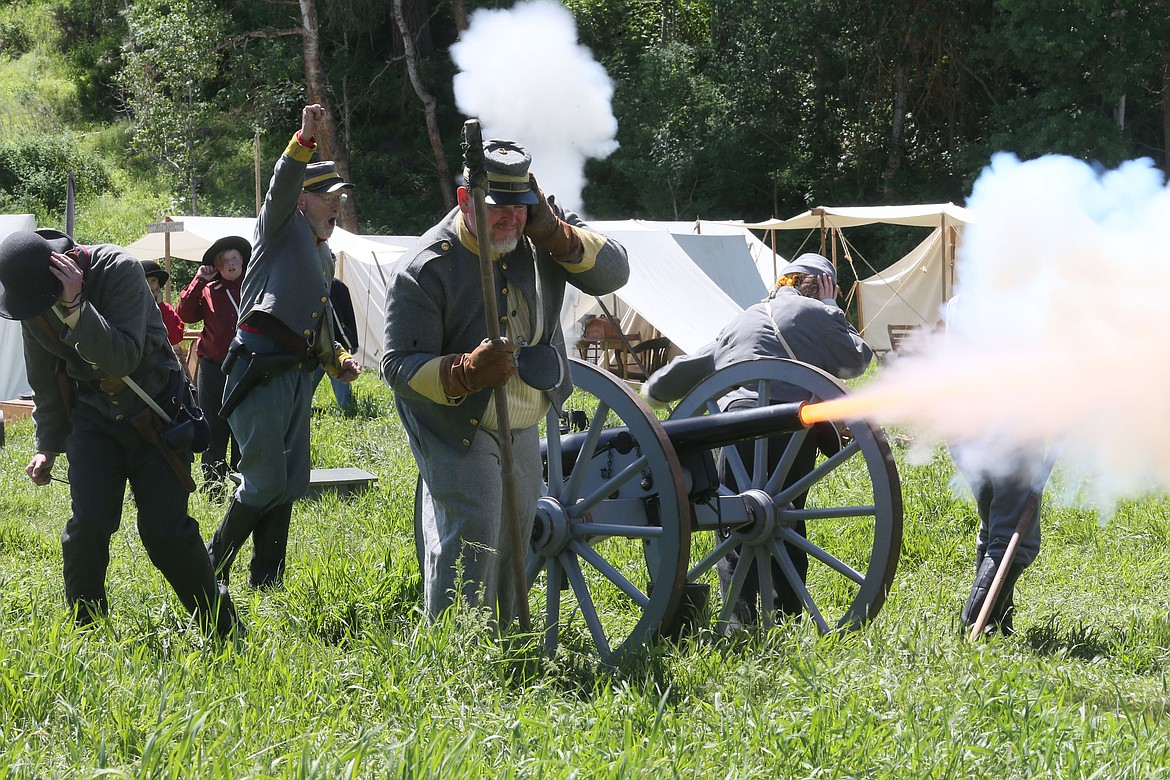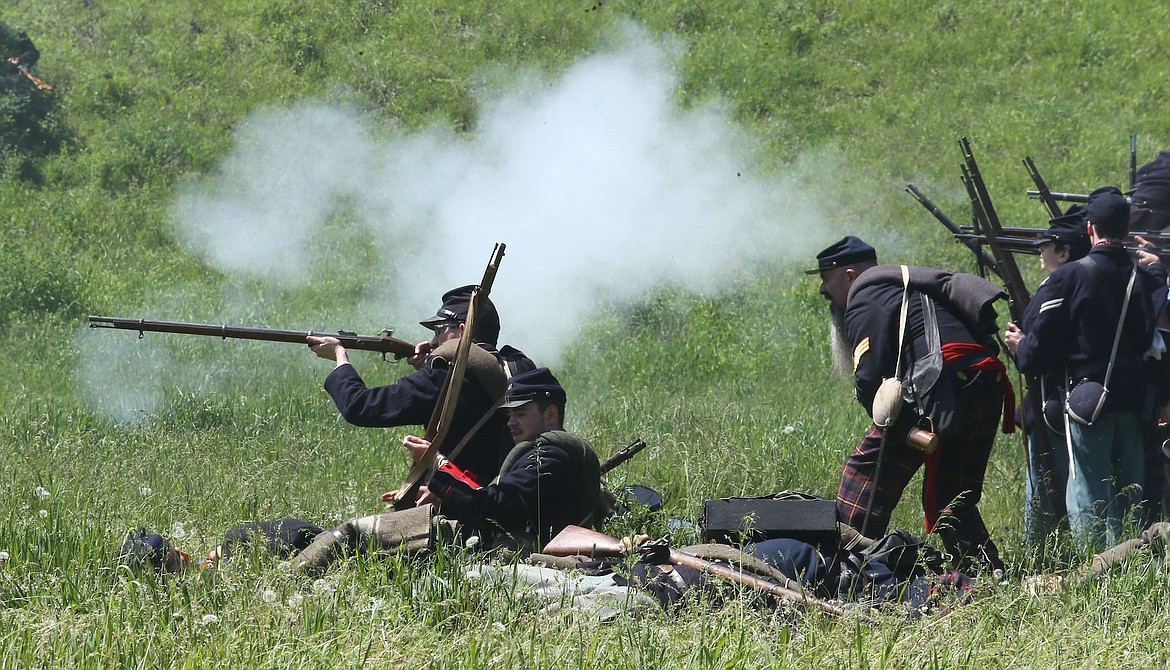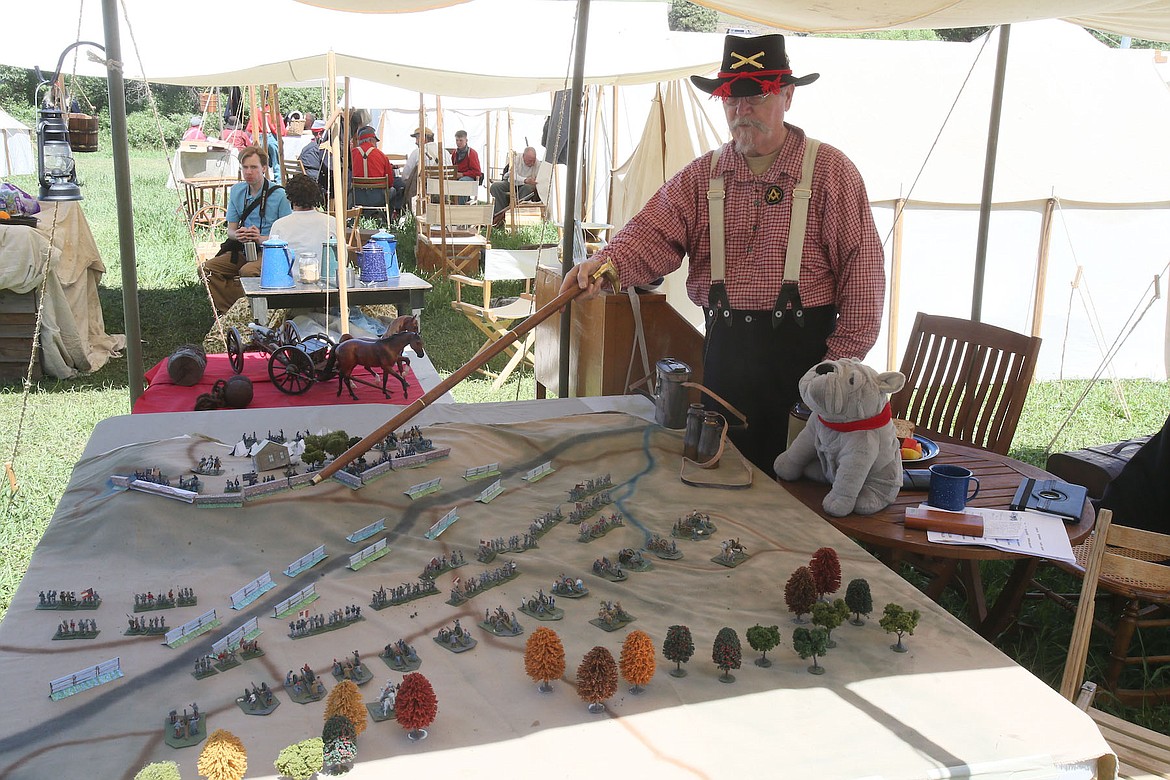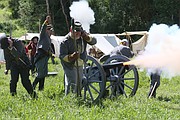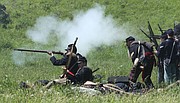North Idahoans battle for living history
DEEP CREEK, Wash. — Over Memorial Day weekend, on a piece of northwestern farmland not unlike those back East now known by such names as Chancellorsville, Gettysburg, and Chickamauga, families, teens, and old military buffs alike gathered to keep America’s history alive.
The Battle of Deep Creek organized by the Washington Civil War Association drew hundreds of re-enactors from across the Northwest, said WCWA membership coordinator Sharron Bortz. The annual event is an educational experience designed to pass on the history of the war known alternatively as the War Between the States, the Great Rebellion, the War of Northern Aggression, or more commonly the Civil War.
Athol resident Larry Hughes and his family got involved in re-enacting three years ago courtesy of some family friends who belonged to the 14th Virginia Cavalry. His kids Gabe, a 10th-grader, and Natalie, an eighth-grader, helped him man the cannon at the event May 26-28. More importantly, they learned about their country.
The war was about states’ rights, said Gabe. There are obvious political lessons to be learned from the war that apply to our time, he added. His education as a re-enactor consists of more than full-scale re-enactments, he explained. He learns about the culture of the time, how Americans dressed in those days, and learns military drills and commands while rehearsing prior to actual re-enactments. On top of that, chuckled his dad, you get to blow up a lot of black powder. Wearing layers of wool in the summer sun is hot, said the elder Hughes, but it’s worth it to make a big boom.
Those hot woolen uniforms kept Coeur d’Alene resident Danny Dougall in the role of a spectator for nine years. He said he wasn’t interested when his kids asked him if they could start re-enacting. However, his attitude changed when he saw that he could make a positive difference in people’s lives through re-enacting. He and his wife, Carly, operate Recon Ministries, with one of its main activities being the mentorship of teens through reliving America’s bellicose history. The ministering couple and their six kids aged 3 to 21 invite their peers to participate in the events, and in the process get to serve as “a light for Christ.”
“I didn’t wake up one morning and say ‘I’m going to be a Confederate chaplain,’” he said with a laugh. However, he’s led 33 people to Christ and baptized a few through taking that leadership position in the 21st North Carolina, he said. The opportunity to have the whole family out of the house, experiencing the outdoors, and learning their heritage is a big attraction for many re-enactors, said Carly. For that reason, while the re-enactors are strict with keeping their uniforms and tents as historically authentic as possible, they take liberties with history by putting women and girls in uniform.
“If women couldn’t be in uniform,” she said, “nobody would come. A lot of them think it’s a lot more fun to be on the battlefield.”
Also, they still get to dress up as ladies for formal events such as balls, she said, and take part in re-enacting camp life, culture, and medical care.
Coeur d’Alene teenagers Emily and Ashley Grant are ninth-generation descendants of Union Gen. Ulysses S. Grant, and alternately fight in skirmishes or tend to meals and hospitality. Grace Dougall started re-enacting as a Virginia Military Institute cadet at the age of 7, and moved up in the ranks to serve as first sergeant at the Battle of Deep Creek.
“I love history and recognizing people who sacrificed for us, who fought for a cause they believed in,” she said. The 16-year-old homeschooled sophomore said she had learned that the Southern side of the war isn’t recognized enough. “Their sacrifices for us are scowled on. But they fought for their state.”
Timberlake High School freshman Ryder Paslay has done re-enacting for three years, and said he enjoyed it as a way to have fun with people he’d otherwise never meet.
Those involved in re-enacting are driven by a love for camaraderie and authentic history education, said Coeur d’Alene resident Ben Benninghoff. The Philadelphia native long ago moved to the Northwest and spent a career with Boeing and the military, but more recently migrated to Coeur d’Alene. When he saw re-enactors from the 1st Michigan Light Artillery put on a demonstration at the Post Falls library, he was hooked. Five years later, he serves as the unit’s sergeant major.
Interestingly, the unit requires its members to be equipped with uniforms for both sides, in case the other side doesn’t have enough troops at an event. The 1st Michigan Light Artillery also serves as the 11th Georgia Sumter’s Flying Artillery, according to its website. Benninghoff has seven relatives who fought in the war and said most of the re-enactors can trace their ancestry to soldiers who fought on one, or both, sides of the Maxon-Dixon line. In addition to family roots, he also loves military history and wants to keep it alive for future generations.
Passing on the knowledge of American history is something that schools don’t do enough of, he said.
“This is who we are. This is our roots,” he said. “Everybody’s welcome.”
The war that took the lives of 620,000 American men was not “good guys versus bad guys,” said Bortz. An “almost negligible number” fought for slavery, and the North didn’t fight against it, she said. Benninghoff added that while the Northwest didn’t send big units to take part in the conflict, many volunteers did join the fight.
To learn more about the 21st North Carolina, go to reconministries.org. To learn more about the 1st Michigan Light Artillery, go to 1stmichiganartillery.com.


